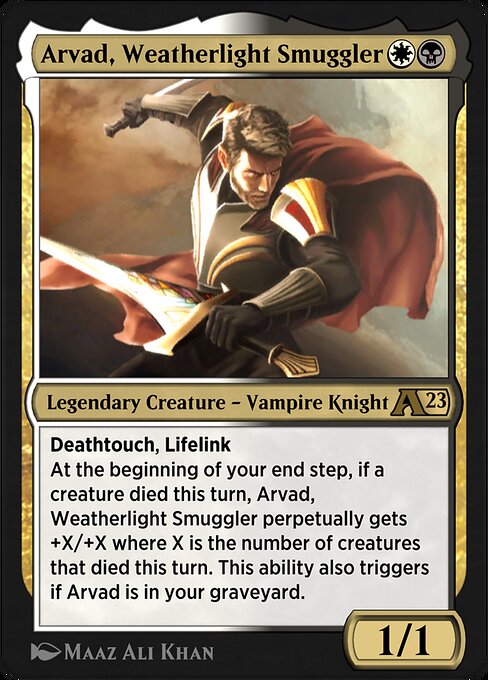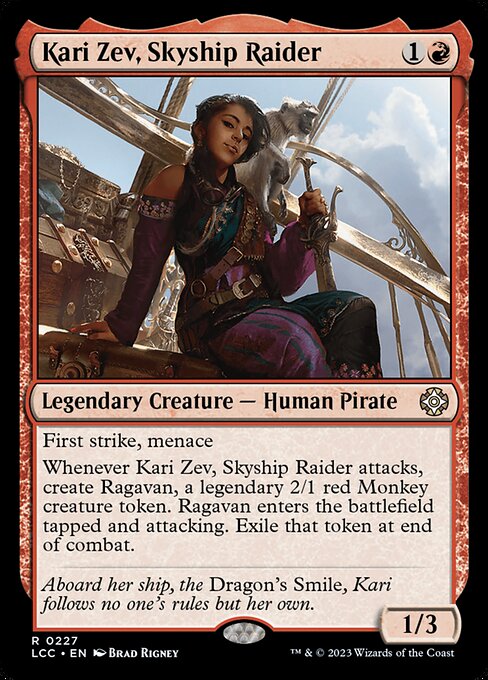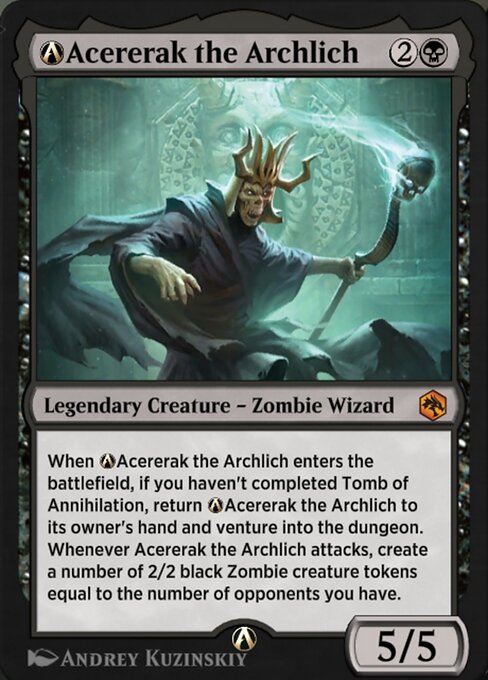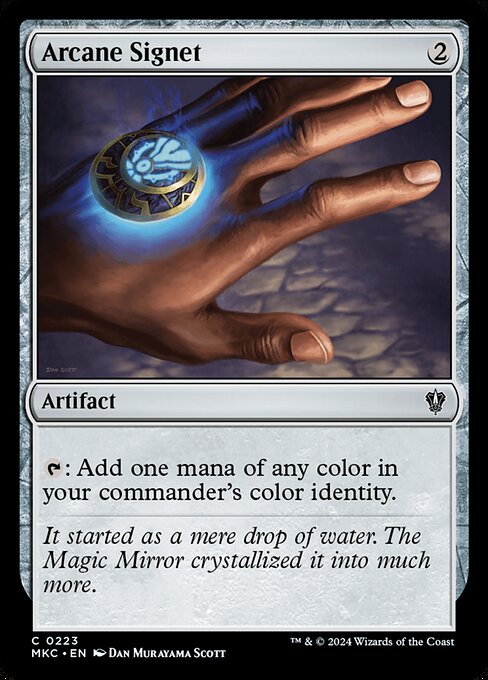Table of Contents
Historic Brawl is quickly becoming a beloved format on Magic: The Gathering Arena. 100-card singleton, a commander, ability to play with most of the cards, and the potential to win on turn 3, that all sounds very familiar. Today we will take a deep dive into how it compares to the most popular format in all of Magic, Commander (EDH), and expose some of the mistakes new players make.
What is Historic Brawl?

Historic Brawl’s ruleset is very close to that of Commander, but there are still some major differences:
- Different (mostly smaller) card pool
- Planeswalkers allowed in the command zone
- Different banlist
- No commander damage
- Players start with 25 life instead of 40
- 1v1 instead of multiplayer free for all
Let’s have a look at each of these three differences and see how they impact the format.
Card Pool
First, we have the smaller card pool. The big thing here is that we have very few sources of fast mana in Historic Brawl. Dark Ritual, Mox Amber and Llanowar Elves are the fastest options available. Everything from that point onwards is mostly two mana ramp one, with the best one of these being Arcane Signet. Nobody is going to untap with five mana on turn two in this format.
On the flip side, we have a few cards that are never going to see a commander table, namely digital-only releases like Arvad, Weatherlight Smuggler, or rebalanced versions of existing cards like A-Minsc & Boo, Timeless Heroes.
Planeswalker Commanders
This also brings us to our next point: Every planeswalker available can be played as a commander, not only the ones that have the lines of text of “~ can be your commander”. This is worth mentioning because you cannot guarantee value from cards like Swords to Plowshares in matchups where the opponent might not have any creatures in their deck at all. Speaking from experience however, this is rarely the case.
Banlist
The next topic that might be very obvious to a lot of people but still worth talking about is that the format also has a different banlist. Wizards of the Coast has decided that Historic Brawl should be treated as a casual format and the banlist reflects this:
- Agent of Treachery
- Chalice of the Void
- Channel
- Demonic Tutor
- Drannith Magistrate
- Field of the Dead
- Gideon's Intervention
- Lutri, the Spellchaser
- Meddling Mage
- Natural Order
- Nexus of Fate
- Oko, Thief of Crowns
- Runed Halo
- Sorcerous Spyglass
- Tainted Pact
- Ugin, the Spirit Dragon
While cards like Channel, Demonic Tutor, and Oko, Thief of Crowns are banned for power level reasons, there are also some cards like Pithing Needle, Runed Halo, and Gideon's Intervention that are only on the ban list for the ability to hard lock the opponent’s commander out of the game and not necessarily because they are too strong.
There are also two cards, Golos, Tireless Pilgrim, and Paradox Engine, that are banned in Commander but perfectly legal in Historic Brawl!
Commander Damage
Next up is commander damage: While a commander can deal 21 combat damage to a single player and have that player immediately lose the game, no matter how high their life total is, this is not the case for Historic Brawl.
It also makes a lot of sense when you think about it: You only have to fight through 25 life instead of the massive 120 combined life total of your opponents in a regular game of Commander.
Starting Life Total
A very interesting thing about the total starting life of 25 is that it is a bigger thing than people might realize. I have seen people complaining about not having 40 life but since this is a 1v1 format you have to compare the life total to the regular 20 you get in most constructed formats.
The five additional life points are huge for the slower decks most people want to play and while it hurts aggro a lot the huge amount of consistency and card advantage a commander brings to the table gives faster decks a fighting chance.
Number of Players
Last, but not least, we have to talk about the elephant in the room: 1v1 instead of multiplayer. The difference this creates in deckbuilding decisions and gameplay is so massive that I would argue that Historic Brawl is closer to Pioneer or Modern than it is to Commander. This is best seen in the removal that is being played in all four formats: Thoughtseize and Fatal Push are absolute staples in 1v1 but fall short when it comes to multiplayer.
On the flip side, people tend to run a few board wipes in every deck in Commander, even if they play to the board, which would just be a mistake in almost any Historic Brawl deck.
How Decks are Constructed
The commander plays a big part in every Historic Brawl deck and it is important to realize how you want to play out your average game. If you run Mono Red Aggro with Kari Zev, Skyship Raider in the command zone for example you’re not going to play a lot of two drops available in the format unless they are either better or serve a different purpose than your commander. Why would you cast a Viashino Pyromancer when you always have a better play for two mana instead?
There are also commanders that are usually not cast on curve and have a different function: Lagrella, the Magpie is mostly used as a removal spell or to amplify your blink shenanigans whereas A-Acererak the Archlich is mostly waiting in the command zone until you play Paradox Engine and win the game on the spot. Recognizing your play pattern is a very important part of deck construction and is a skill a lot of players with Commander experience already have.
The big difference lies in the interactive cards and, as previously mentioned, the speed of the game. Most players probably have experienced Commander in a more casual setting and usually think in terms of turn two ramp, turn three ramp, turn four value engine, and then maybe see what comes after that. You are going to get hit by Thoughtseize on turn one, your dork will get killed by Lightning Bolt and your mana rocks are going to get countered by Spell Pierce in this format. This doesn’t mean that playing ramp is bad, but too many players are putting Arcane Signet into every single deck, even aggro lists.
Choosing the correct removal for your deck is also tricky. Yes, Swords to Plowshares is a busted card and unless you are playing a Storm deck you are very likely to include it in your list if you run white. But I encourage you to think twice before playing Counterspell in every single blue deck, even if you plan to tap out every turn or double blue is too harsh of a cost. And unless your deck can’t reliably win on turn 4, which it probably can’t, you should cut your fifth 5-drop for an Infernal Grasp or a Fateful Absence.
The last but not least part of every deck is the mana base. A common misconception is that we have good mana in the format, which is not true. I define a good mana base as being able to cast your spells consistently on curve. Decks with 3+ colors lack both of those things. Yes, commanders like Esika, God of the Tree will come out on curve because they can afford to play tap lands, but a deck like Rigo, Streetwise Mentor has to resort to cards like Spara's Headquarters to have enough colors.
You also do not want to run too many lands that enter tapped or do not produce colors unless you need their effects. If that is the case I recommend playing a few more lands overall.
Public Matchmaking

It might seem weird to some people that we are talking about matchmaking in this article but it will make a ton of sense in a second. Here is roughly how it works: Every commander has a tier or a range of tiers associated with them. A commander can (for the most part) only be matched against a commander if they share a tier.
Example: Let’s say Kinnan, Bonder Prodigy is tier 1, Heliod, Sun-Crowned is tier 1-2, and Prosper, Tome-Bound is tier 2-3. Heliod can match against either deck, but Kinnan and Prosper are unable to be matched against one another. This is not exactly how it works because the system also considers the strength of the deck itself and your matchmaking ranking (MMR) but should give you a rough concept.
This means you will likely play Veil of Summer in decks that play exclusively in tier 1 but probably not in any other deck. Another side effect of this is that you will get decent results in this format even if your list is suboptimal. While the system is definitely a double-edged sword and I would personally prefer truly random matchmaking I think this is a good way to handle the format overall since it encourages creativity over competitiveness. One might not agree with the goals of the format but the execution is well done.
Putting It All Together
Let’s have a quick look at one of the best decks in the format, Teferi, Hero of Dominaria and see how it is constructed with everything in mind we learned earlier.



Commander
Planeswalkers (4)
Creatures (1)
Instants (31)
Sorceries (10)
Artifacts (6)
Enchantments (7)
Lands (41)
100 Cards
$284.76
As you can immediately see this list runs quite a high amount of 2-drops. This plays well with our commander, creating a play pattern of turn 5 Teferi, uptick, and holding up interaction. This is also the reason why 4 mana board wipes are so strong here, clearing the board for our commander before he hits the field.
Another interesting part to look at is what kind of interaction we have chosen to run. Swan Song is usually a staple but will beat down our commander. We play Pact of Negation instead as it allows us to play our commander on curve, counter a counterspell, untap 2 mana for protection, and pay the next turn.
Since we are also considering our matchups in the public queue Mystical Dispute is a great card versus pretty much every deck we play against except Sythis, Harvest's Hand Other tech choices include Portable Hole and Witness Protection, mainly to stop the opponent from overwhelming us before we can get our shields up.
With 41 lands and an additional 3 mdfc’s we are running quite a high amount, but we have to take into consideration that we are running 2 colorless sources and 4 lands that will always enter tapped, no matter what. We do this because the additional value in the late game is invaluable and would rather run more land than cut down on the utility.
Playing Historic Brawl on a Budget

Historic Brawl is incredibly friendly to F2P players in the long run but takes a bit of time to get into. The singleton requirement of every single deck is a steep entry barrier but once you have crafted the staples (which there are a lot of compared to other formats) you can build any deck with minimal investment.
I highly recommend sticking to one, maybe two colors in the start, crafting the staples and the mana base, and once you get those you can include another color in your repertoire. Also try avoiding crafting cards from the latest two to three sets as only the first copy of a card is valuable to you and you will likely open a couple of packs of those sets through the mastery pass down the road.
Here are two budget decks I recommend as a starting point, with most cards being Common or Uncommon cards. Yawgmoth, Thran Physician has a great sacrifice theme and Gretchen Titchwillow can do powerful extra turn strategies without too much Rare or Mythic Rare investment.

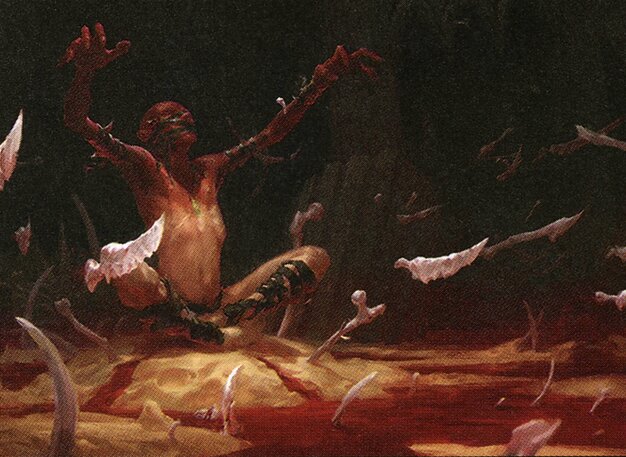

Commander
Creatures (32)
Instants (10)
Sorceries (12)
Artifacts (4)
Lands (39)
100 Cards
$78.4


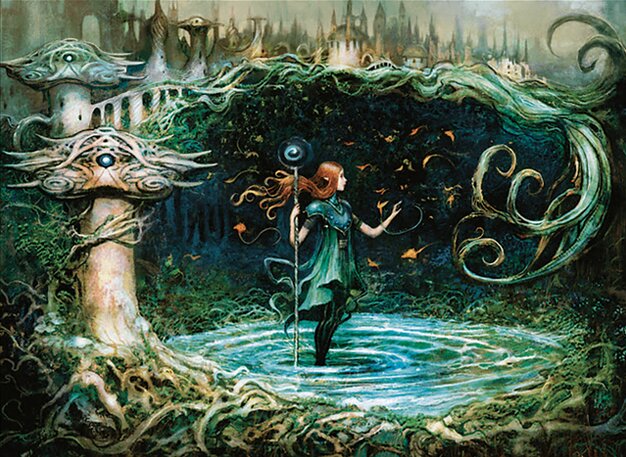
Commander
Planeswalkers (1)
Creatures (12)
Instants (23)
Sorceries (12)
Artifacts (6)
Enchantments (5)
Lands (41)
100 Cards
$123.87
Closing Thoughts
Historic Brawl is an extremely diverse format that I highly recommend checking out. Almost anything can be viable thanks to the matchmaking algorithm and don’t be discouraged if you lose a bunch at the start: Even after hundreds of games you are going to discover something new and you will never know what the next opponent will play.



